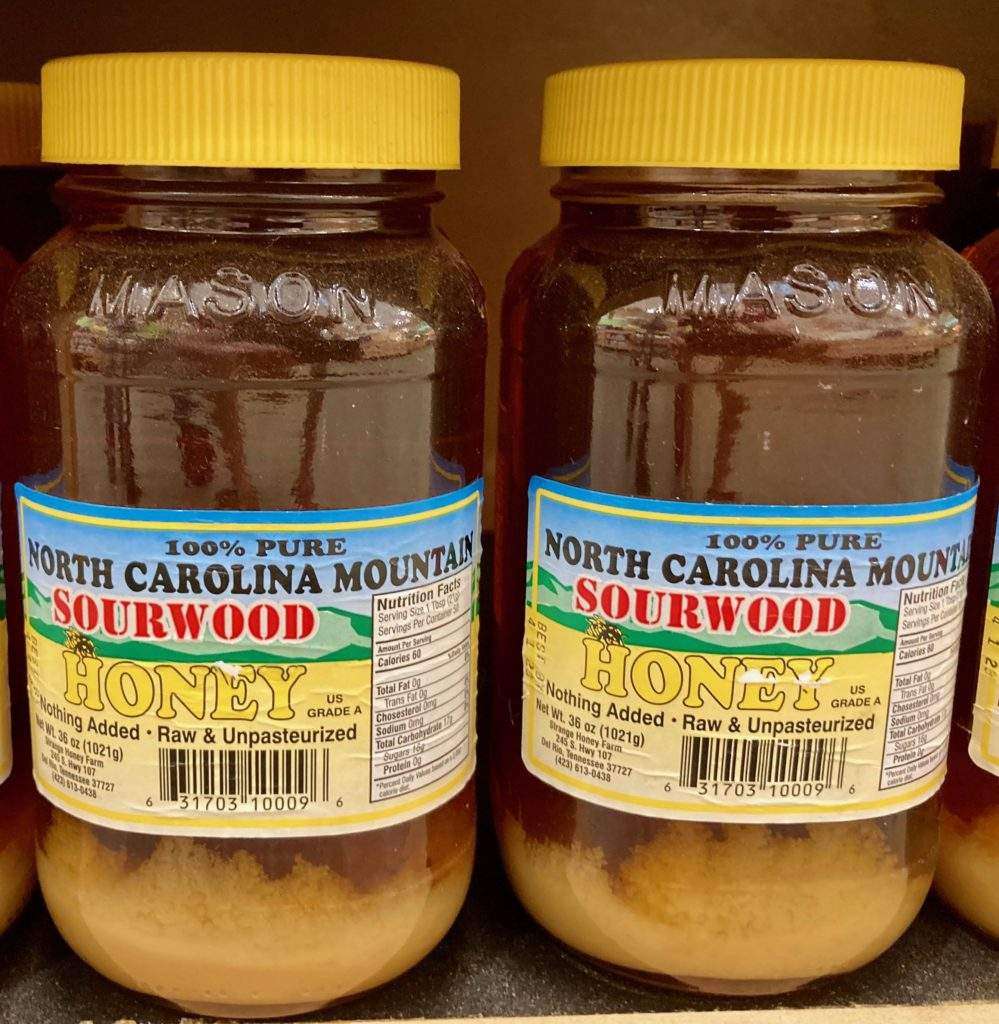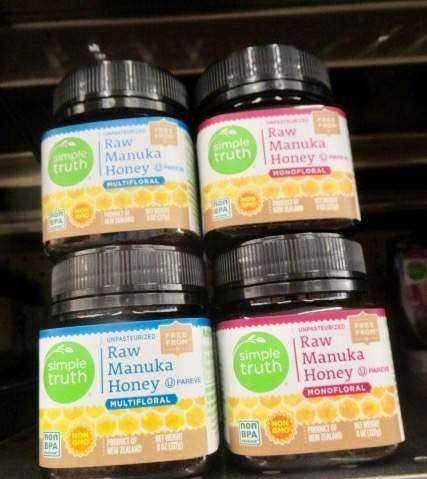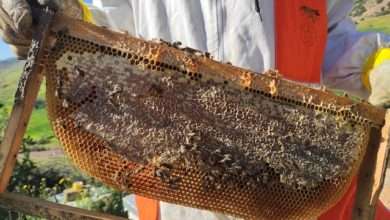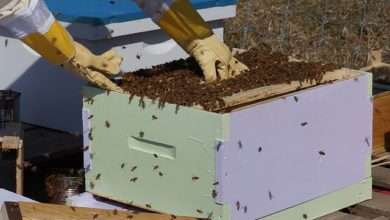Is Sourwood Honey Healthier Than Manuka Honey?

Sourwood honey has more health benefits than Manuka honey as per the results of a study published in 2013 when the first data on Sourwood honey was reported.
What is Sourwood Honey?
Every year, Sourwood honey is harvested in the months of July and August when the Sourwood trees that hail from the Appalachian Mountains bloom. The honey harvested is always sweet, mild, and buttery with just a nip of spice on the finish plus they have a rich amber tasting more like caramel.
During the study, it was found that Sourwood honey had flavonoids (156.82±0.47 mgcatechin/kg) and phenolics (580.03±0.38 mggalic acid/kg). additionally, the honey had a high DPPH radical scavenging activity (59.26±.3.77%) plus a ferric reducing power (648.25±0.90 µM Fe (II)/100g).
When Sourwood honey was compared to manuka honey, it was found that sourwood honey had better antioxidant potential than manuka honey. The phenolic content of sourwood honey was 580.03 mg/kg compared to the one in manuka honey which was 429.61 mg/kg.
The majority of beekeepers are aware that honey is a naturally occurring substance created by honeybees and is mostly composed of the sugars fructose and glucose. Honey is also an extremely concentrated solution of a complex blend of carbohydrates.
Honey is equipped with various biological properties such as antibacterial, anti-inflammatory, wound and burn healing, antioxidant, radical scavenging, antidiabetic and antimicrobial activities that are essential to your body apart from being a functional food.


What was measured?
During the study of these two types of honey, multiple physical parameters were measured. The measured parameters included pH, moisture content, electrical conductivity (EC), total dissolved solids (TDS) color intensity, and total sugar and sucrose content.
In order to determine the antioxidant properties of honey, a number of biochemical and antioxidant tests were performed. The high-performance liquid chromatography was used in determining the levels of Hydroxymethylfurfural (HMF).
Antioxidant Potential of Honey
The antioxidant potential of honey is strongly correlated with the concentration of total phenolic present as has been shown in multiple studies.
Further, according to reports, the honey’s hue and antioxidant activity are significantly associated. Dark-colored honey has been found to have greater total phenolic contents and, as a result, stronger antioxidant capabilities.
Increasing interest has been there in recent years in trying to determine the antioxidant potential of honey. The greatest influence on honey’s antioxidant activity is its botanical origin.
Additionally, it was also found that the antioxidant activity of honey can be affected only to a minor extent by processing, handling, and storage.
Phenolic Content in Honey
The concentration of total phenolics presents correlates strongly with the antioxidant potential of hone according to results from multiple studies.
A significant class of substances known to affect both the presence and the functional qualities of honey are polyphenols, which are represented by the total phenolic content.
The highest phenolic content contained in sourwood honey was found to be 580.03 mg/kg which was higher than the 429.61 mg/kg found in manuka honey hence indicating that sourwood honey had much better antioxidant potential than manuka honey.
Flavonoids in Honey
The aroma and antioxidant potential of honey are caused by low molecular weight phenolic compounds known as Flavonoids. Among all the types of honey investigated, sourwood honey was found to have the highest levels of the flavonoid content of 156.82 mg/kg as with the phenolic content.
In pollen collected by honeybees, flavonoids make up the majority of the phenolic class. They are well recognized for their ability to act as antioxidants, with one of the most well-known mechanisms being the direct scavenging of free radicals.
A more stable, less-reactive radical is produced when flavonoids are oxidized by radicals. When flavonoids neutralize with the reactive element of the radical, it stabilizes reactive oxygen species. Due to its alleged antioxidant capabilities, honey with higher flavonoid contents is preferred.
To determine the total antioxidant content of honey, the FRAP assay is used. The presence of either antioxidants or reductants in a sample is directly estimated by the assay.
Among all the types of honey investigated, sourwood honey was found to have the highest. This indicates its significant reducing power and antioxidant potential.
Ascorbic acid
Ascorbic acid is one of the non-enzymatic substances present in honey that is a known antioxidant apart from polyphenols.
It was found that manuka honey had an ascorbic concentration of 128.9 mg/kg while sourwood honey had 132.07 mg/kg. This indicates that the ascorbic concentration in sourwood honey is slightly higher than that of manuka honey. This can be the reason for the sour taste in sourwood honey.
Protein content
The enzymes added by the bees or other chemicals taken from the nectar can help to supplement the total protein level of honey, which is reliant on flower sources. Compared to manuka honey, sourwood honey had the highest protein percentage.

Study conclusion
The outcomes made it very evident that, when compared to manuka honey, sourwood honey has the best antioxidant properties.
According to the study, honey’s antioxidant and free radical scavenging properties are due to its phenolic, flavonoid, ascorbic acid, and proline concentrations.
The best source of antioxidants is sourwood honey, which has the highest quantities of phenolics, flavonoids, and ascorbic acid. It should thus be consumed more frequently.
What is special about Sourwood Honey?
Many people who have tried this honey say it tastes like gingerbread, and it has a lingering sweetness to it.
Sourwood is the ideal sugar substitute for baked products like cakes, sweetbreads, and cookies because of its light amber hue, which makes it slow to crystalize and ensures that it will keep a long time in your pantry.
What does Sourwood honey taste like?
The golden hue and buttery caramel flavor of sourwood honey are both lovely. There is a faint twang in the aftertaste that has been compared to gingerbread. The texture of sourwood honey is smooth and syrupy, and it smells like cinnamon and cloves.
How can you tell Sourwood honey?
Compared to other types of honey, sourwood honey features an extra-light to light amber color.
Additionally, the crystallization of sourwood honey is a bit slow. Apart from having a distinctive flavor of anise and spice, sourwood honey is extremely aromatic.in addition to this, sourwood honey features a persistent sweet and pleasant astringent aftertaste.
Where does Sourwood Honey come from?
Honey is mostly collected from flower nectar. There is a tree that grows in the Appalachian Mountains found in North Georgia, North Carolina, and some parts of Tennessee where the honey is derived from the nectar of its flowers.
The harvesting of honey is always done when the tree blooms for six weeks between July and August.
What is the difference between sourwood honey and regular honey?
Sourwood honey bears one-of-a-kind aromatic, floral honey, unlike the dark, bold mineral taste of the tulip popular.
Its subtle anise and spice flavor, which makes it one of the most distinctive kinds of honey in the world, is concealed by its ultra-light, amber tint.
How Do You Get Sourwood Honey?
The sourwood tree (Oxydendrum arboretum) produces nectar, which is extracted and turned into honey to make sourwood honey.
Honey bees will typically gather sourwood trees that are 33 to 66 feet tall. Their trunk can expand to a diameter of 50 cm.
The sour (or harsh acidic) flavor and aroma of the leaves are where the name “sourwood” originates (from oxalic acid). The words “oxy” which means “sharp or acid” and “dendrum,” which means “tree” in Greek, combine to form the name “Oxydendrum.”
Bright flaming crimson and orange leaves appear in the fall. Mid-June until late July is when sourwood trees bloom.

Which honey is healthiest?
It appears that Manuka honey has been replaced by Sourwood honey, as it contains a significantly higher concentration of potent nutritional, anti-viral, and healing properties.
This sort of honey is produced in the Appalachians by bees that pollinate the local Sourwood tree, and it is powerful in flavor and nutrient value.
Implications for Beekeepers
If you are a beekeeper that produces Sourwood honey, you should be extolling the benefits of the healthiest honey available. It should be announced on all websites, social media and in-store marketing materials.
Right now Manuka honey sells at a high premium. With the ascribed health benefits of Sourwood, this honey should be premium-priced as well.
Here is a link to the original study comparing Sourwood honey to Manuka honey:
https://bmcchem.biomedcentral.com/articles/10.1186/1752-153X-7-138




